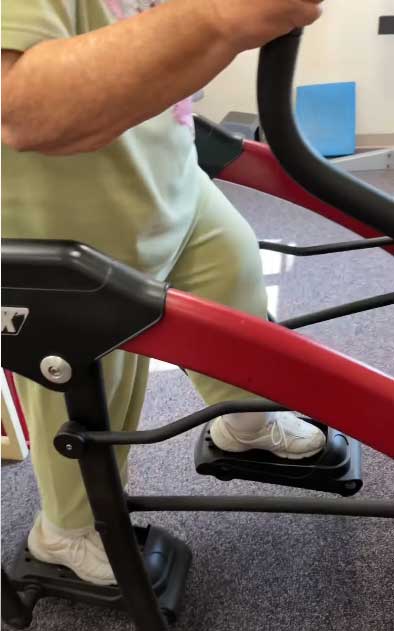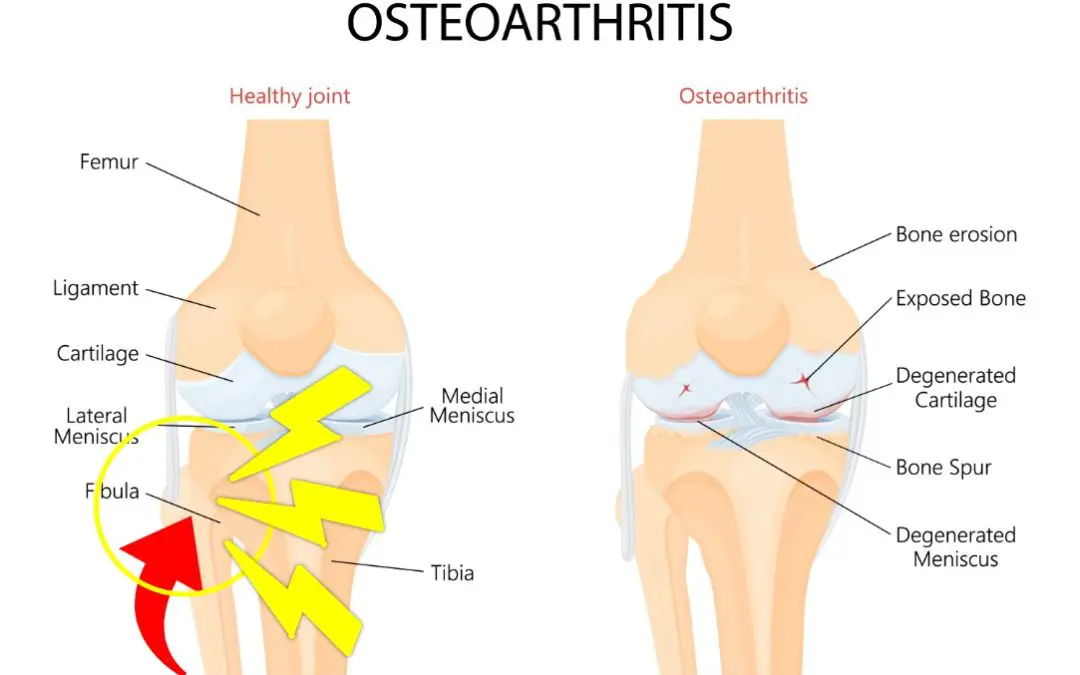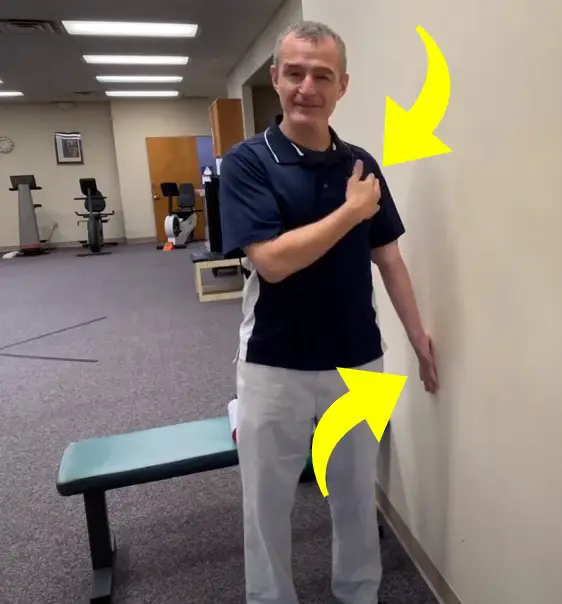Using an Elliptical Trainer After Total Knee Replacement Surgery
An elliptical trainer may be the best of all worlds when choosing an exercise machine after a total knee replacement surgery.
The elliptical trainer allows you to perform weight bearing exercise without the impact of walking or jogging on your new knee joint.
You also receive the benefits of a vertical component with each step or revolution.
Video: Benefits of the Elliptical Trainer Post Knee Replacement
Video Summary:
Tony Maritato, PT emphasizes the elliptical trainer as a highly effective equipment choice after undergoing a total knee replacement. Unlike treadmills and bikes, the elliptical offers weight-bearing exercises, promoting a more functional return to walking. It’s designed to reduce impact forces on joints, encourage symmetrical stride lengths, and is user-powered, ensuring safety and control during workouts.
Usage Instructions for the Elliptical Trainer
When using the elliptical, it’s essential to get on and off safely. To get on, one should position the pedals to step over with the non-surgical leg first, then step up with the surgical side. Gentle rocking can be initiated to warm up the surgical leg, followed by full revolutions. To get off, the surgical foot should be removed first, followed by the non-surgical foot.
Comparing the Elliptical to Other Equipment
While treadmills and stationary bikes have their advantages, Tony prefers the elliptical for post-surgery recovery. The treadmill can pose certain risks, and while bikes are great for range of motion, the elliptical’s weight-bearing nature makes it more functional for walking recovery. Regardless of the equipment, it’s crucial to choose what aligns with one’s recovery stage.
Is An Elliptical Trainer Safe After Total Knee Replacement
The elliptical trainer is a wonderful choice for exercise equipment following a total knee replacement surgery. You gain the advantage of weight bearing exercise to improve the health of the bones while minimizing the impact of walking or jogging.
Another benefit includes control over the vertical aspect of each step. The taller the incline on an elliptical trainer the greater your knee range of motion. This is better than walking when it comes to improving knee range of motion
One other often overlooked benefit of an elliptical trainer is the fact that your feet are moving in a rhythmic and reciprocal pattern.
Normal walking allows you to shorten one stride while taking a longer step on the non-surgical side. This imbalance may lead to other complications down the road.
When can I start using an elliptical trainer after surgery?
Many clients are able to start using an elliptical trainer within the first week following surgery.
The elliptical requires less knee range of motion than a typical stationary bike and is often more comfortable than walking.

How long should I use an elliptical trainer during each workout?
Most of my clients begin with a 2 minute episode the first time they use an elliptical following knee replacement surgery.
I often recommend stopping before you feel like you have to stop. This allows you to build confidence and focus on the quality of your motion instead of the quantity of your motion.
Early in the recovery process we want recommend you take ample rest breaks.
Elliptical Training Plan:
Day 1-10: Perform between 30-seconds and 2-minutes per episode and up to 4 episodes a day at a low intensity.
Day 11 – 28: Gradually increase the duration by 10% each day until you achieve a continuous episode of 10-minutes without shortness of breath. The intensity should feel like a 3/10 with 10/10 being so intense you are forced to stop.
Week 5 and beyond: Gradually increase duration of each episode to a maximum of 30-minutes. If you are able to perform 30-minutes of continuous walking on an elliptical trainer then reduce your duration and increase your resistance or elevation.
How do I know if I am doing too much?
The best way to determine if you are overtraining is to consider how you feel the same night of the next day after a workout. If you are more fatigued or your pain is increasing then you either need to exercise less or take a longer break between workouts.
I find that increasing fatigue and soreness along with possible increased stiffness and loss of range of motion are signs of overtraining.
If you are experiencing these symptoms consider taking a 48-hour rest break of all structured exercises and only perform normal daily activities.
Which is the best elliptical to purchase?
These days there are many varieties of elliptical trainers. Consider features like:
- moving arms
- a flat or angled foot plate
- the length and weight of the machine
- how difficult it may be to move around your home or apartment
- and the resale value of the brand
Is an elliptical better than a stationary bike?
PROS:
- Allows you to perform weight bearing exercise
- Burns more calories per minute
- Provides a total body workout
CONS:
- More expensive
- Takes up more space
- Harder to move around your home
What would a physical therapist choose?
I would choose an elliptical over a stationary bike simply because the long term benefits and use of an elliptical outweigh those of a bike.
Here are some of my recommended Elliptical Machines for home use:

8 Pickleball Mistakes to Avoid for Beginners
Updated June 03, 2022 One of the main factors that cause beginners to experience setbacks when learning pickleball is doing too much too fast. Throught his article I will discuss the most common 8 pickleball mistakes along with some exercises you can try to prevent...

How much does physical therapy cost after a total knee replacement?
Phyiscal therapy cost varies greatly across locations and service providers. In this article we will examine the cost of physical therapy services for three different patients. One patient has traditional Medicare part B insurance. The second patient has no health...

3 Pros & Cons of Bilateral Knee Replacement
Having a bilateral knee replacement on the same day vs different days depends largely on your surgeon's assessment of your condition and current clinical research. A 2020 study suggested that patients receiving a same day bilateral knee replacement were not more...

Best shoes to wear after knee replacement
Best shoes to wear after knee replacement surgery:This article is specifically written to help you choose the best shoes to wear after knee replacement surgery when you return home. This information is focused on house-shoes and day 1 to week 6 post op.Click here to...

NEW Orthotics After Knee Replacement
Do You Need New Orthotics After Knee Replacement Surgery? Often, patients who receive a total knee replacement will have previously been prescribed custom orthotics. Custom orthotics may help reduce stress at the knee joint in the months or years before knee surgery...

Pain on the Outside of Knee After Total Knee Replacement
Experiencing pain on the outside of knee is common among individuals who have had a total knee replacement. 1. Fibular Head (Outside of Knee) The long skinny bone that runs along the outside of your lower leg is called the Fibula. This bone is not directly involved...

Cupping Therapy After Total Knee Replacement
Although the risk of major medical complications attributed to cupping therapy is low, the efficacy of cupping therapy is poorly associated with post surgical care and total knee replacement scar tissue mobilization.Cupping Therapy Research As of March 21, 2022 a...

Do physical therapists make house calls?
Do physical therapists make house calls? Find the answer to this and questions like: How much does physical therapy cost? Will a physical therapist come to my office? What is MobilePT?

Return to Work After Knee Replacement Surgery
When can I return to work after knee replacement surgery? For most administrative jobs, a 6-week timeframe to return to work after knee replacement surgery is recommended. For occupations that require prolonged standing, walking, climbing or crawling a 12+ week...

3 Drills to CRUSH your POWER Pickleball Serve
Pickleball is a power sport. Developing a Power pickleball serve requires yuo to be both strong and fast. Power is defined as the amount of work divided by the change in time. In order to improve power, a pickleball player must possess three things: Table of Contents...


